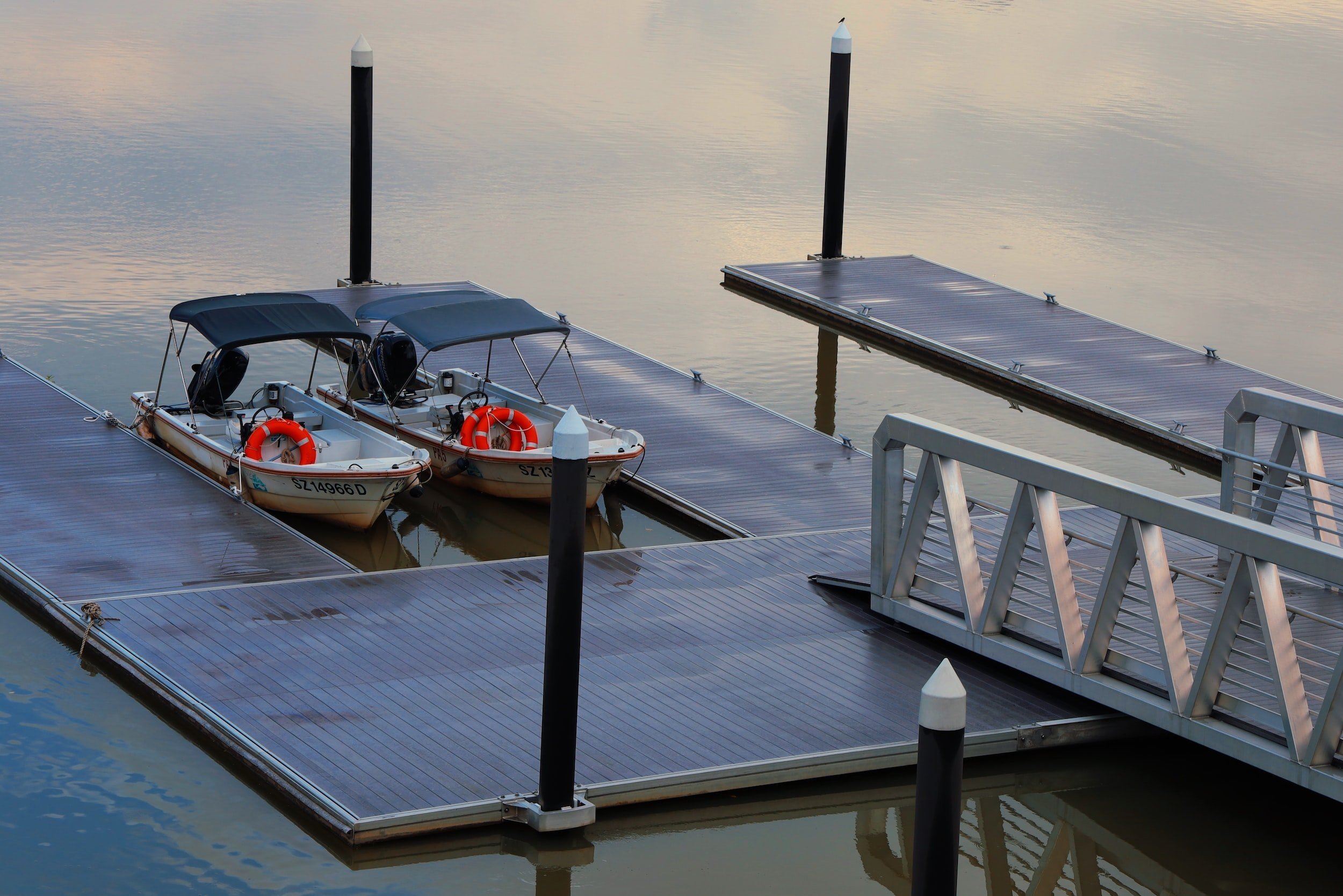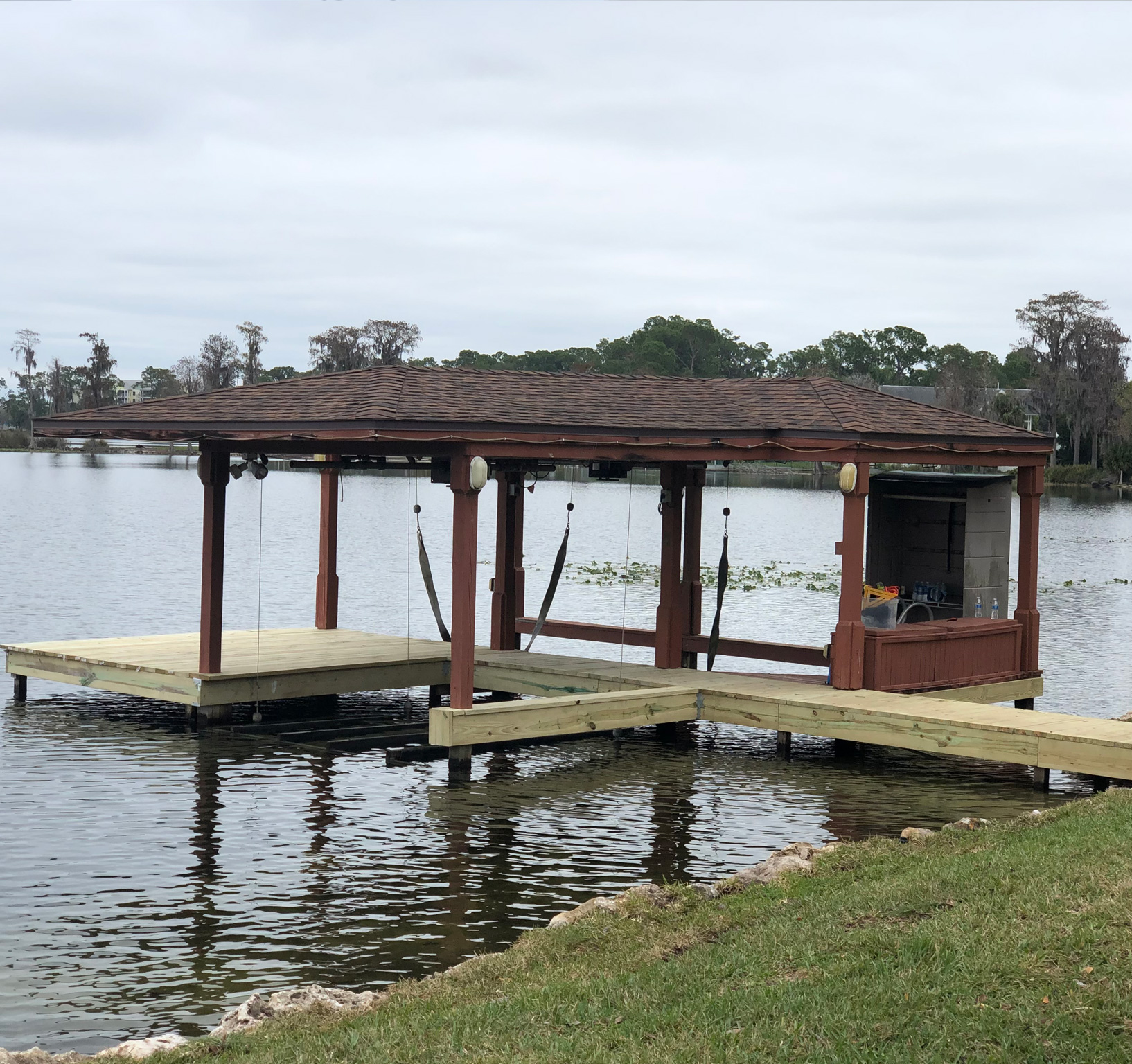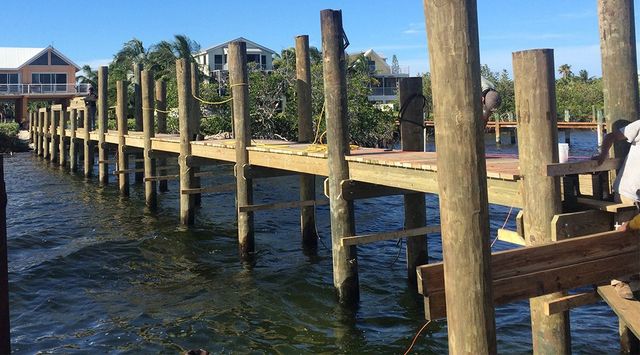Efficient Dock Fixing Techniques: Making Certain Architectural Stability
Guaranteeing the architectural honesty of docks via effective repair methods is vital for the long life and security of aquatic centers. Consequently, selecting the ideal repair materials, such as corrosion-resistant alloys and composite products, is critical for toughness.
Assessing Dock Damage
Examining dock damages is a vital primary step in guaranteeing the architectural integrity and safety of any type of docking center. This first evaluation involves an extensive examination to recognize both visible and covert problems. Secret facets to check out consist of the dock's structure, pilings, decking, and hardware. Each component must be inspected for indications of wear, rot, rust, or other forms of deterioration that might jeopardize the structural stability.
Structural designers or certified assessors generally perform these assessments using specialized techniques and tools. Underwater inspections might use finder equipment or remotely operated lorries (ROVs) to find submerged damage. Over water, aesthetic evaluations are complemented by utilizing wetness meters and other analysis tools to reveal underlying problems not right away visible to the nude eye.

Picking Repair Service Products
Picking the appropriate repair work materials is a critical action in the dock reconstruction procedure, one that straight influences the longevity and performance of the repaired structure. Material option must be driven by factors such as environmental conditions, load-bearing requirements, and compatibility with existing dock components. Timber is a typical selection for anchors due to its all-natural durability and aesthetic appeal. However, selecting the right kind of timber, such as pressure-treated lumber or normally rot-resistant types like cedar or teak wood, is critical to hold up against marine environments.
Along with timber, composite materials are progressively prominent due to their toughness and reduced upkeep requirements. Compounds, usually made from a blend of plastic and wood fibers, offer exceptional resistance to rot, pests, and UV damages. For steel docks, picking corrosion-resistant alloys such as galvanized steel or marine-grade aluminum is important to stop rust and make sure structural stability in saline water problems.
Epoxy resins and marine-grade sealants are indispensable for fixing splits and sealing joints, giving a water-proof barrier and improving the dock's total toughness. By carefully choosing high-grade materials, dock repair work can accomplish durable outcomes, thereby protecting versus future destruction and making certain safe, dependable use.
Architectural Support Strategies
Reliable architectural reinforcement strategies are essential in ensuring the stability and longevity of dock repairs. One fundamental method involves using steel or composite reinforcement bars (rebar) within concrete structures. Rebar provides extra tensile strength, avoiding cracks and distributing loads more evenly. This approach is specifically reliable for anchors revealed to hefty tons or extreme environmental This Site conditions.
Another important method is the application of fiber-reinforced polymers (FRP) These materials supply high strength-to-weight proportions and excellent resistance to deterioration, making them excellent for strengthening wooden or concrete anchors. FRP can be applied in strips or sheets and adhered with epoxy resins to boost architectural stability.
Bracing and securing systems likewise play an important role in architectural reinforcement. Cross-bracing, making use of metal or wood beam of lights, can counteract side forces, lowering persuading and movement. Anchoring systems, such as helical piers or driven heaps, supply a stable structure by transferring lots to much deeper, more steady soil layers.
Finally, the integration of load-distribution plates can assist distribute weight a lot more evenly across the dock's surface area, mitigating localized tension points. These strategies jointly ensure that docks continue to be secure and robust, with the ability of enduring the roughness of their functional environment.
Advanced Repair Service Methods

One more sophisticated method includes underwater welding, which enables repair work to be conducted without the need to dewater the area. This approach is particularly beneficial for resolving architectural problems in submerged dock components, ensuring minimal disturbance her response to procedures. Improved welding methods, coupled with robot systems, supply precision and dependability, consequently prolonging the life-span my sources of the dock.
In addition, cathodic protection systems are implemented to avoid corrosion in metallic dock frameworks. By using sacrificial anodes or pleased present systems, these methods effectively alleviate the electrochemical processes that lead to product degeneration.
Last but not least, advanced surveillance technologies, such as architectural health tracking (SHM) systems, supply real-time data on the problem of dock structures. These systems make it possible for proactive upkeep and prompt treatments, ultimately guaranteeing the lasting architectural honesty of the dock.
Upkeep and Prevention
Maintenance and prevention are essential ideas that underpin the durability and safety of dock structures. Normal examinations are vital, permitting for early discovery of deterioration, possible weak points, and ecological effects. An aggressive strategy, entailing regular checks for rust, rot, and structural changes, mitigates pricey repairs and prolongs the dock's functional life.
Preventative steps should include using protective layers to steel components to defend against rust and utilizing cured wood to withstand degeneration. Additionally, ensuring appropriate drain and air flow can protect against water build-up, which is a common source of structural degradation. Integrating top quality products and sticking to producer standards throughout construction and repair phases likewise play essential functions in enhancing longevity.

Educating personnel in dock maintenance finest practices makes sure constant application of preventive measures. Leveraging technical developments, such as drones for examinations and sensing units for real-time tracking, can better boost maintenance efforts. By prioritizing maintenance and avoidance, dock owners can make certain structural honesty, functional safety, and cost-efficient administration over the dock's life-span.
Conclusion
In final thought, maintaining the architectural honesty of marine centers necessitates thorough dock repair techniques. Detailed inspections utilizing advanced devices discover both noticeable and hid problems, while the option of appropriate repair service materials boosts sturdiness. Applying architectural support methods addresses anxiety points effectively. Advanced repair service strategies, combined with normal upkeep methods, guarantee the dock continues to be functional and risk-free under diverse ecological problems. Embracing these methods significantly lengthens the lifespan and capability of aquatic facilities.
Making sure the architectural honesty of anchors via efficient fixing techniques is extremely important for the long life and safety and security of aquatic centers.Choosing the ideal fixing materials is an essential step in the dock restoration procedure, one that directly influences the longevity and performance of the fixed framework.Efficient structural reinforcement methods are important in guaranteeing the stability and longevity of dock repairs. By focusing on maintenance and prevention, dock owners can make certain structural integrity, operational security, and affordable administration over the dock's lifespan.
In conclusion, maintaining the structural integrity of aquatic facilities requires detailed dock repair work techniques.